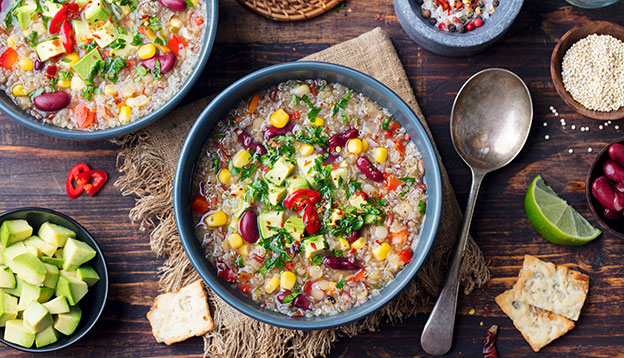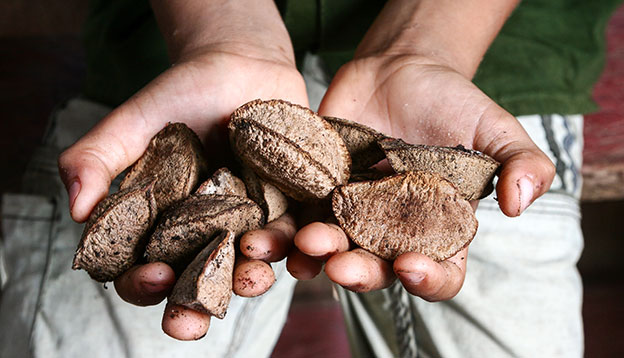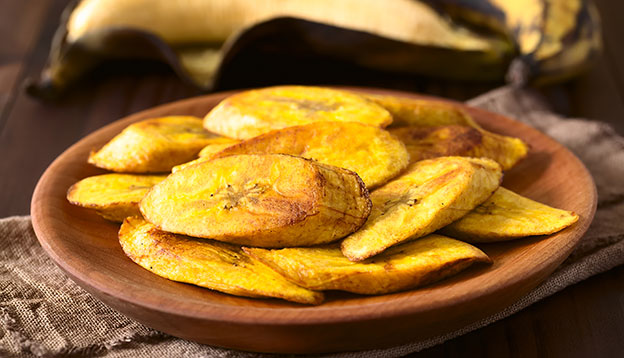A Vegetarian’s Guide to South America Travel
South America Latin America Travel Essentials Travel Tips Wine and Dine
South America is traditionally known as a carnivore’s Utopia and it’s true that meat plays a massive role in local cuisine, no matter which country you travel to. Having said that, it is becoming increasingly easier for vegetarians to travel happily in South America and not be forced to compromise on their dietary restrictions. After all, eggs, cheese and pulses also feature heavily on all local dinner tables, as do potatoes, corn, yuca and cassava. Granted, all these are mostly served as ‘sides’ to a meat-dish but it also reasons that it’s not difficult to survive on sides alone. But who wants to survive, when travelling?! South America is a grand culinary destination and we think there’s absolutely no reason why vegetarians need to miss out. What they do need is to know what to look for!
Your vegetarian guide to South America, summed up in 8 priceless tips:

1. Outside of major cities, vegetarianism is still a foreign concept, so tread lightly
Vegetarianism and veganism are still foreign concepts in South America, especially outside of major cities. It isn’t surprising, really, given that ‘meat’ is still considered a luxury to be enjoyed and appreciated in many parts of the developing world. This means that choosing to forego meat is a concept that leaves many locals perplexed, but that doesn’t mean you won’t find plenty of meat-free dishes. After all, some of the most famous local dishes in South America, like Peru’s papas a la huancaina, are actually vegetarian although that’s not how locals identify them. This is why it is almost useless to declare your ‘vegetarianism’ in the hope of being served a meatless dish. Our best tip? First off, know the best vegetarian-friendly dishes in your intended destination and, when in doubt, remember that it’s simply easier to state you are allergic to meat (and poultry, fish, eggs, dairy etc as the case may be). We don’t see the harm in telling little white lies that make everyone’s life easier and this is perhaps the most effective way to ensure no sneaky meat gets on your plate.

2. Download the Happy Cow App
This invaluable website is a travelling vegetarian’s best friend, hosting an impressive list of restaurants that make for very happy cows indeed, complete with reviews and tips from previous customers. What’s great about the HappyCow is that they not only list vegetarian and vegan-specific restaurants but also eateries that offer enough vegetarian-friendly options that are worth a visit – particularly helpful when travelling with carnivorous mates. Download the app before you travel, research your intended destinations and you’ll get a good idea of just how easy (or not) your dining out experience will be. Among the most popular vegetarian/vegan options (and the most fail-safe) are the Hare Krishna-run Govinda restaurants, which offer inexpensive and delicious buffets that showcase a variety of flavours. They’re quite widespread and becoming increasingly more popular (the Aguas Caliente- Machu Picchu Town – branch is excellent) and make for excellent and very tasty alternatives.
Here’s a happy cow, for illustrative purposes…

3. Stock up on dry protein if going remote
Generally speaking, you’ll find it easy to feast away in all capital cities and all major tourist hubs, even if they’re quite small. As long as there’s a healthy ex-pat and tourist crowd, trust that you’ll find plenty of vegetarian options. Head into remote regions, however, and you may want to be a little more prepared, especially when it comes to protein. Finding vegetables and fruit isn’t the issue, but finding appropriate protein sources might be – it’s a great idea to bring a hefty supply of protein bars so you don’t need to stress that you haven’t taken in enough of the good stuff every day. No matter where you go in South America, you’ll always find mixed nuts (which is great) yet peanut butter is harder to find and, where available, it’s sold at exorbitant prices because locals don’t eat it. If you do live off the stuff, consider popping a jar in your suitcase, especially if you’re brand-sensitive. We’ve also had vegetarian guests travel to South America with 2kg tubs of vegan protein powder which we found to be quite genius. Getting your protein from shakes may not be ideal long-term, but it certainly solves the issue on vacation to a continent that’s not yet embraced the vegetarian diet.

4. Plan ahead
You’ll be surprised how accommodating hotels, guides and travel agencies can be if only they’re told in advance of dietary restrictions. Vegan and vegetarian options on the Inca Trail to Machu Picchu are absolutely marvellous, for example, and as long as we’re told in advance about any kind of requirements, there’s almost ‘nowhere’ in the continent we can’t send you! Private, tailor-made tours are a great way to ensure your dietary requirements are well taken care of.

5. Not all ‘carne’ is created equal
Carne is Spanish for ‘meat’ but you’ll no doubt discover that, in almost all of South America, carne only refers to red meat. This means that should you ask for your dish ‘sin carne’ (without meat) you’ll probably be proudly served chicken instead. Moreover, almost all soups served all over South America are made with bone-broth yet, according to local restaurateurs, they are appropriate vegetarian options as long as meat pieces are not included. Determine how strict you want to be when travelling to South America and then be very specific about your dietary requirements when you get there.
6. Some destinations are inherently vego-friendlier
Throw a heavy dose of Italian influence into a country’s cuisine and you’ll immediately have many more vegetarian options on the menu. This is what makes Argentina one of the best countries for vegetarians to visit – the sheer array of plant-based dishes, pastas and pizzas making travelling throughout the country quite easy. Chile also rates highly, arguably because it is one of the most modernised nations in the continent – the more developed a country (or city) the higher your chances of finding vegetarianism embraced. Should you happen to be pescatarian, then you’ll also have a much easier time, especially along both coastlines (obviously) where ceviche and other seafood is served in abundance. Even meat-crazy countries like Brazil boast an impressive array of vegetable dishes and given the array of pay-by-weight buffet restaurants, it means you can pick and choose what’s on your plate.

7. The vegetarian-friendly staples
An important thing to note about vegetarian travels through South America is that culinary options are available all over, they may just not be too exciting in remoter regions. Beans (at least a dozen varieties) are absolutely huge in every single country and many meals are based entirely on pulses. You’ll also find plenty of quinoa (the Andes), egg and cheese-based dishes, no matter where you go. One of the most ubiquitous (and delicious) staple you’ll find all over is the cheese and veggie filled-empanada. South America also boasts many street-food staples that are vegetarian-friendly, be they corn and cheese fritters, plantain chips and cheese-breads.

8. Knowledge is key
We find that knowledge is half the battle won when it comes to finding exquisite vegetarian meals in South America. Understanding South American culture, the many culinary influences and country-specific variants means you’ll be clued-up as to which staples you should be homing in on and where you’re likely to find it easier to travel.
Read our comprehensive South America Food guide to gain a better overview of your intended destination and talk to us about tailor-made South America tours.
Where Will You Go Next ?
- Popular Destinations
- Antarctica
- The Arctic
- South America
- Central America
- More to explore
- Amazon
- Antarctic Circle
- Antarctic Peninsula
- Argentina
- Bolivia
- Brazil
- Canadian Arctic
- Chile
- Colombia
- Costa Rica & Panama
- East Antarctica
- Ecuador
- Galapagos Islands
- Greenland
- Guatemala & Honduras
- Machu Picchu
- Mexico
- Patagonia
- Peru
- South Georgia and Falkland Islands
- Spitsbergen
- Sub Antarctic Islands

Talk to one of our experienced Destination Specialists to turn your Antarctic, Arctic and South American dream into a reality.
Contact us